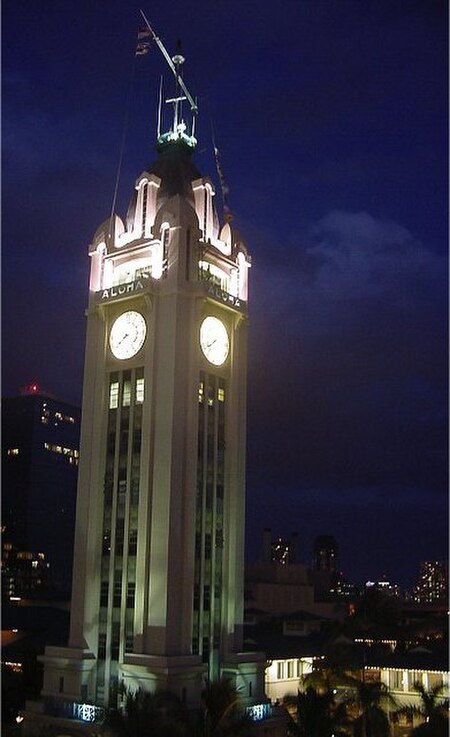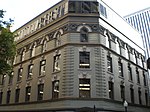Aloha Tower Marketplace
1994 establishments in HawaiiBuildings and structures in HonoluluHawaii building and structure stubsHawaii stubsShopping malls established in 1994 ... and 4 more
Shopping malls in HawaiiTourist attractions in HonoluluUnited States shopping mall stubsUse mdy dates from March 2020

The Aloha Tower Marketplace is a waterfront shopping center in Honolulu, Hawaiʻi. Located at the Honolulu Harbor, the Aloha Tower Marketplace includes several national historic landmarks including the Aloha Tower, Falls of Clyde and Hawaiʻi Maritime Center.
Excerpt from the Wikipedia article Aloha Tower Marketplace (License: CC BY-SA 3.0, Authors, Images).Aloha Tower Marketplace
Fort Street, Honolulu Chinatown
Geographical coordinates (GPS) Address Nearby Places Show on map
Geographical coordinates (GPS)
| Latitude | Longitude |
|---|---|
| N 21.3076 ° | E -157.86513333333 ° |
Address
Honolulu Cruise Ship Port
Fort Street
96808 Honolulu, Chinatown
Hawaii, United States
Open on Google Maps








